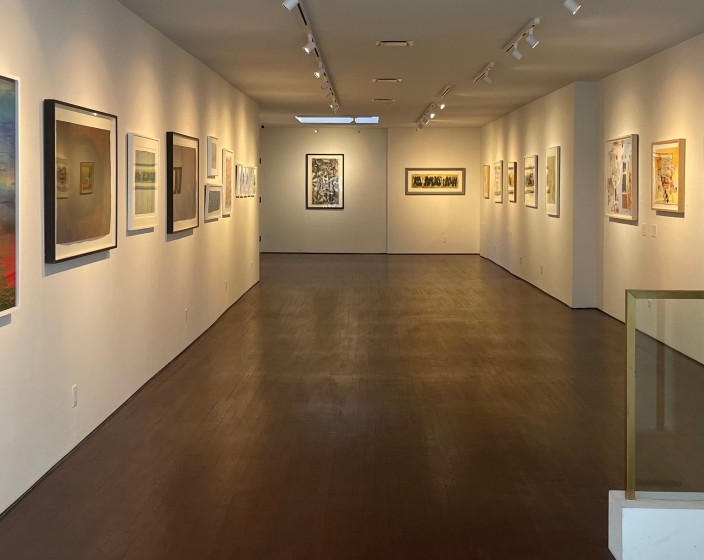
Herbert Gentry (1919-2003) was born in Pittsburgh, Pennsylvania and grew up in Harlem, New York. His mother began work in Harlem as a chorus dancer in theater and club venues, introducing Gentry to a world of music and magic. His introduction to modern painting came about after completing high school when he was enrolled in art courses taught by WPA artists at Roosevelt High School and the local YMCA. Shortly after settling into an office job, his life changed when War was declared in 1941. Over the course of his enlistment, Gentry was stationed in North Africa, Corsica, France, Austria, and Germany. This exposure to new cultures, people, and places would inspire him to devote his life to constantly moving around, meeting new people, and painting. He moved to Paris in 1946 and studied drawing and painting at the Académie de la Grande Chaumière. He opened a club-galerie in 1948 in Montparnasse as a meeting place for artists and students of all nationalities. After a short stint back in New York, Gentry returned to Paris where he transitioned fully into his life as an artist. In 1959 he was invited to exhibit in Copenhagen and settled there until 1964, when he moved to Gothenburg, and later Stockholm, Sweden, all the while keeping a studio in Paris. Gentry would rotate between the different international art worlds, actively participating in the art and jazz scenes there, eventually including New York as one of his bases.
He painted in a semi-figural abstract style, suggesting images of humans, masks, animals, and objects caught in a web of circular brushstrokes encompassed by flat, bright colors. He had suggested that his works are uncalculated and come from his subconscious: painting what he feels as he feels it. Gentry's striking images are the product of his exposure to exotic people and places throughout his lifetime.